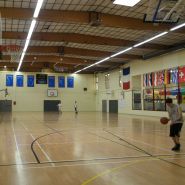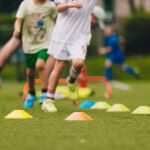You know that kids need to get moving more and you’ve got some idea of what they should be doing. But how are you going to encourage them to do so?
Here we give you some tips on what you can do.
Get parents involved
This is important – especially if you’re trying to get students to ditch the car or bus and walk or cycle instead. Explain to parents what you’re doing and why, and encourage them to promote an active lifestyle for the whole family.
You could even – tactfully! – suggest they accompany their kids on walks and bike rides; after all, the majority of adults aren’t getting enough exercise either…
Parents will be rightly worried if the route to school involves crossing busy roads. Google Maps is your friend; use it to plot a safe journey.
Teams and clubs
Participation in after-school sports teams and clubs has many positive effects for students, teaching teamwork, better communication and relationship skills, timekeeping and decision making. There’s even evidence that it improves academic performance.
You could run these yourself, or help students improve their organisational skills by encouraging them to set up their own teams and clubs.
If enough kids take part they could even co-ordinate tournaments.
Competition
It’s been shown that a bit of competition is good for children. It increases self-confidence and resilience in the face of setbacks and puts winning – and losing – in perspective.
Studies have also shown that taking part in competitive sport can improve youngsters’ well-being and self-esteem.
Keep students motivated by awarding points for different activities, intensity and time. The student with the most points at the end of the week wins the competition.
Technology is not always the nemesis of an active lifestyle
With TV, smartphones, laptops and tablets, it’s no wonder today’s teenagers have an average of seven hours screen time every day. But technology can be a great tool for improving activity levels, too.
The popularity of wearable tech in the form of activity trackers has got thousands of people achieving 10,000 steps per day. These products are expensive and school budgets certainly don’t stretch that far, but there might be a local business willing to sponsor your efforts.
Alternatively, most older students have smartphones, which come with their own step counters, and there are plenty of free apps that track activity and can help encourage an active lifestyle. These can then be used to log active minutes, time and distances for your weekly competitions.
Little leagues
The US is way ahead of the UK on this. There they have all kinds of children’s leagues for sports. These feed into high school and college leagues, from which the professional teams recruit.
You can work with schools within your LA – or even further afield – to organise inter-school leagues and tournaments, complete with league tables, trophies and even even award ceremonies.
The bigger you can make it, the more likely students are to participate.
That’s just a few ideas to get your students moving. You might have some of your own – please do share them in the comments section below.
Resources
There are loads of free activity-tracking apps for smartphones. Here are some to try out:
Strava: probably the world’s most popular cycling tracker, with route mapping, distance, speed and much more. www.strava.com
Map my Ride: map cycling routes, track activity and even log food intake. www.mapmyride.com
Runtastic: a simple pedometer that compiles daily steps into useful charts. www.runtastic.com
Endomondo: track running and walking routes, distance and duration. It also allows users to send motivational pep talks to friends. www.endomondo.com
The Walk: a pedometer that encourages users to get out and about by revealing a thrilling story as they walk. www.thewalkgame.com
Rebecca has been a writer and editor for almost 20 years. She writes on a huge range of subjects, concentrating on sport, nature, mental health, and crafts.










